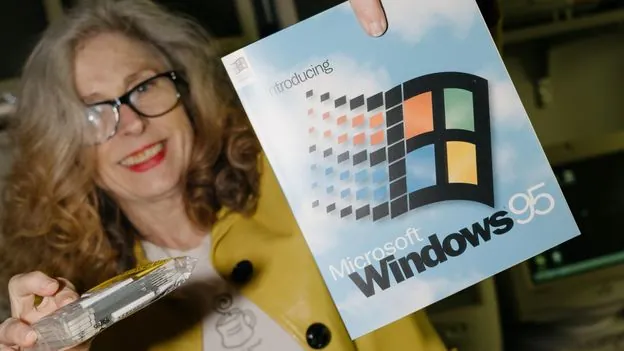
The Ancient Windows Machines That Just Won't Die: A Glimpse into Tech's Reluctant Past
2025-05-18
Author: Ying
CTRL+ALT+DEL: A Journey Through Time
In an era where technology evolves at lightning speed, many people find themselves tethered to ancient Windows systems that remind us of a bygone era. From hospitals to ATMs, the remnants of Windows XP, released a staggering twenty-five years ago, are still present in everyday machines, challenging the notion of progress.
Microsoft: A Legacy and a Burden
2023 marks fifty years since Microsoft's inception, and while the company has surged to the forefront of technological innovation, its shadow looms large over society. With AI investments leading the charge, many still feel the impact of the past as they operate systems birthed from earlier decades. Digital infrastructures built on legacy software continue to be a reality for countless users.
Old Machines in Everyday Life
The fact that many ATMs still rely on outdated Windows systems, such as XP and even the ancient Windows NT from 1993, reflects the complex web of economic and regulatory challenges involved in upgrading. Elvis Montiero, an ATM technician, explains that the costs associated with upgrading systems often outweigh the benefits.
Despite Microsoft ceasing support for Windows XP in 2014, the software’s reliability keeps it entrenched in daily transactions across the financial sector.
The Surprising Use of Legacy Systems
Even in sectors where you wouldn’t expect it, such as public transport, archaic systems persist. In Germany, for example, a job listing for the Deutsche Bahn required knowledge of Windows 3.11 and MS-DOS, reflecting a strikingly outdated reliance on technology. A company spokesperson explained that while trains may be updated, stable and safe older systems often remain in use.
A World Driven by Floppies and Windows 2000
Similar scenarios unfold in San Francisco, where the Muni Metro relies on floppy disks to boot its Automatic Train Control System, a practice that seems destined for obsolescence but maintains nostalgia.
In San Diego, massive printers that operate on Windows 2000 churn out high-quality prints, demonstrating how some industries cling to older technology due to exorbitant upgrade costs. John Watts, who operates these printers, says moving to modern software would cost tens of thousands, thus trapping him in a frustrating tech quagmire.
The Cost of Sticking with the Old
Many professionals, like psychiatrist Eric Zabriskie at the VA, find their days consumed by the slow boot-up times of outdated systems like the Computerized Patient Record System, which operates on even older platforms. Such inefficiencies are symptoms of deferred maintenance, where organizations prioritize new developments over the upkeep of existing systems.
Preserving the Past in a Digital Age
In stark contrast, some choose to preserve vintage technology for its artistic value. Dene Grigar, director of the Electronic Literature Lab, curates a collection of functional computers dating back to 1977, where old digital art remains alive and relevant. With a focus on preserving the interactive nature of early digital works, Grigar highlights the unique qualities that are often lost in emulation.
Why Are We Still Stuck?
As organizations cling to aging technology, the tendency to overlook updates leads to greater dependency on legacy systems. With a longer support timeline and a focus on leveraging existing hardware, Microsoft’s strategy has made its software a staple in countless operations.
Embracing the Old: A Complex Reality
Whether viewed as a hindrance or a nostalgic embrace of the past, these ancient Windows machines symbolize a complex relationship between innovation and reliance on established infrastructure. As society wades into a future driven by AI and new technologies, the remnants of Windows' history are woven into the fabric of daily life, reminding us that some things refuse to change.




 Brasil (PT)
Brasil (PT)
 Canada (EN)
Canada (EN)
 Chile (ES)
Chile (ES)
 Česko (CS)
Česko (CS)
 대한민국 (KO)
대한민국 (KO)
 España (ES)
España (ES)
 France (FR)
France (FR)
 Hong Kong (EN)
Hong Kong (EN)
 Italia (IT)
Italia (IT)
 日本 (JA)
日本 (JA)
 Magyarország (HU)
Magyarország (HU)
 Norge (NO)
Norge (NO)
 Polska (PL)
Polska (PL)
 Schweiz (DE)
Schweiz (DE)
 Singapore (EN)
Singapore (EN)
 Sverige (SV)
Sverige (SV)
 Suomi (FI)
Suomi (FI)
 Türkiye (TR)
Türkiye (TR)
 الإمارات العربية المتحدة (AR)
الإمارات العربية المتحدة (AR)